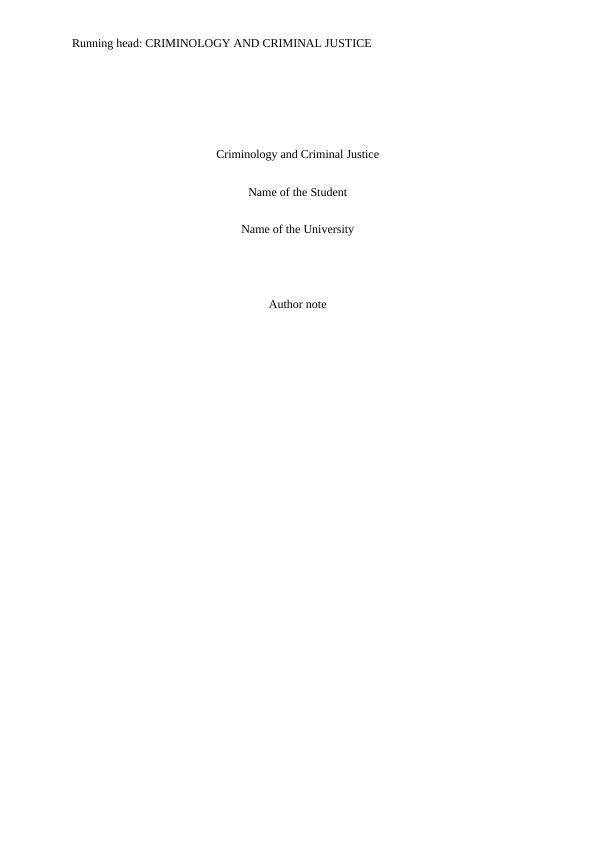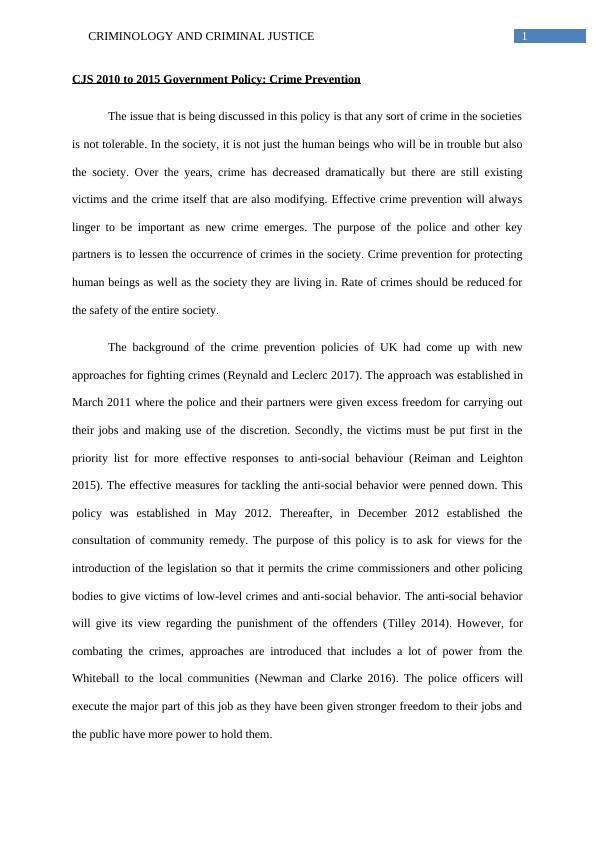CJS 2010-2015 Government Policy: Crime Prevention
Choosing ONE of the CJS policies from the list, outline the political theories, processes and practical influences in its formation.
8 Pages2101 Words127 Views
Added on 2023-06-12
About This Document
This article discusses the UK government's policies and strategies for preventing crimes in the society. It covers the approaches and legislations implemented for reducing the rate of crimes, including the child sex offender disclosure scheme, hate crimes legislation, and the formation of new programs to stop individuals from being involved in serious crimes. The article also highlights the importance of community safety partnerships and police crime commissioners in ensuring safety and strategic plans for victims, witnesses, and communities affected by serious crimes.
CJS 2010-2015 Government Policy: Crime Prevention
Choosing ONE of the CJS policies from the list, outline the political theories, processes and practical influences in its formation.
Added on 2023-06-12
ShareRelated Documents
End of preview
Want to access all the pages? Upload your documents or become a member.
National Youth Policing Model in Australia: A Criminological Perspective
|13
|3419
|264
Crime Occurrence Review
|4
|589
|447
Crime Causation and Diversion
|12
|810
|19
Assignment on Juvenile Delinquency | Annotated Bibliography
|7
|1631
|508
The AntiTrafficking Monitoring Group Assignment
|15
|4296
|31
Alternative solution to the criminal justice policy
|7
|1536
|16



